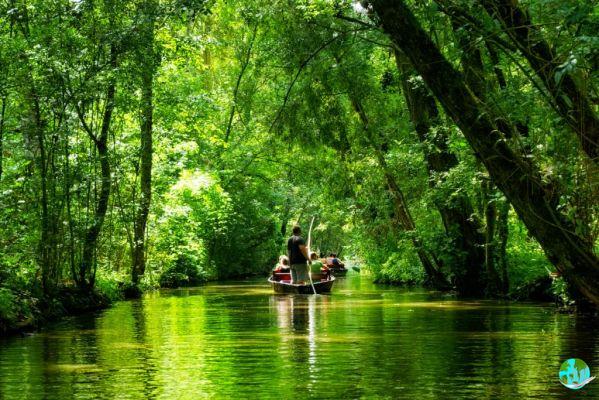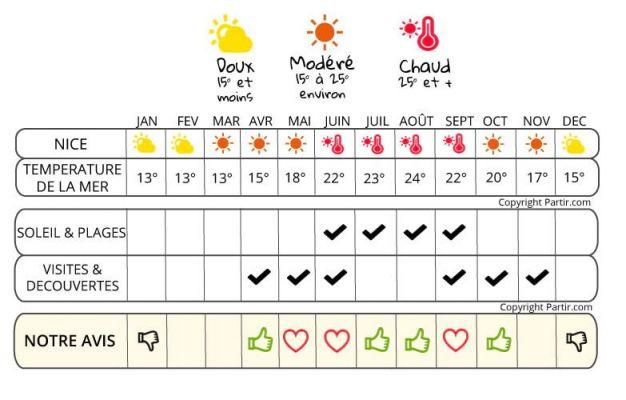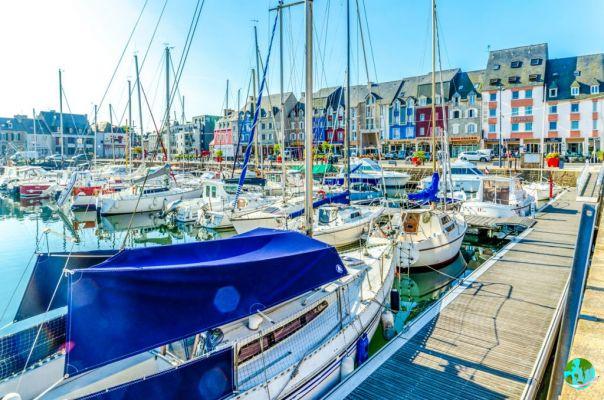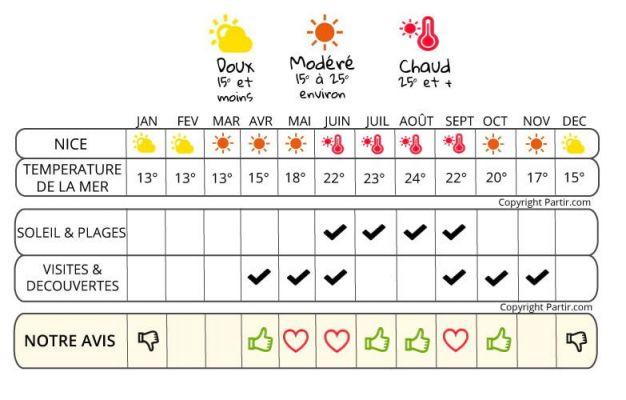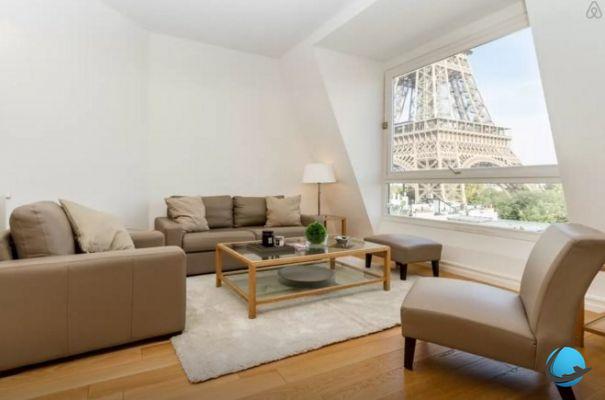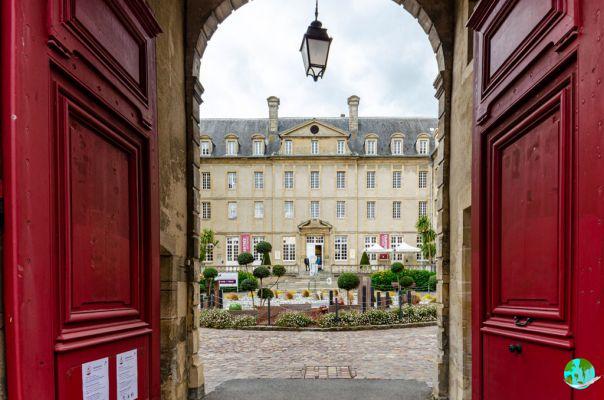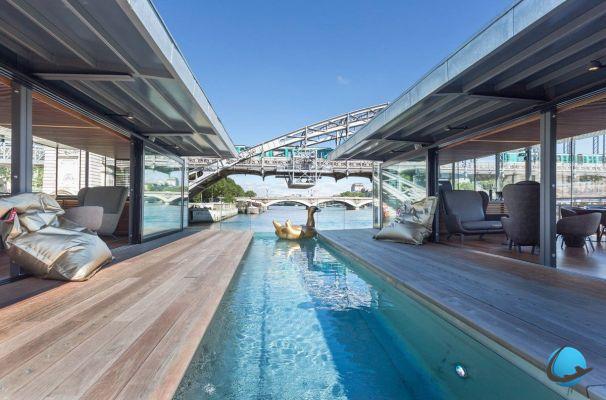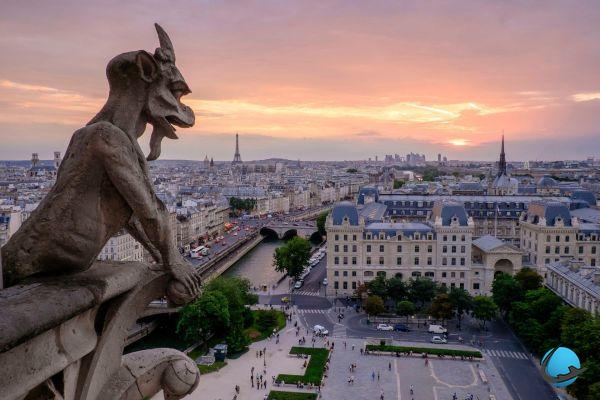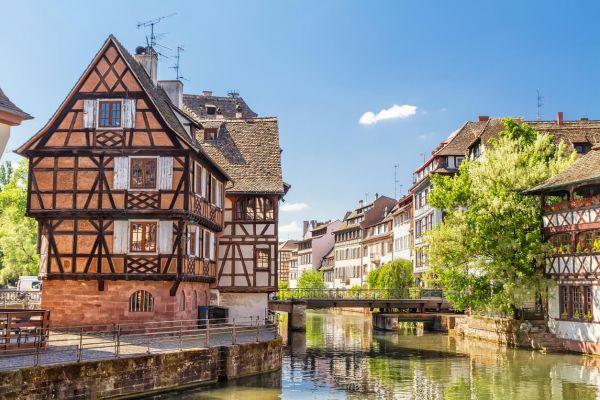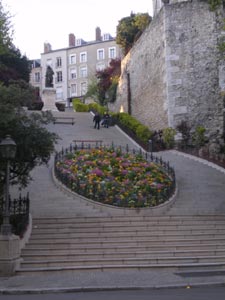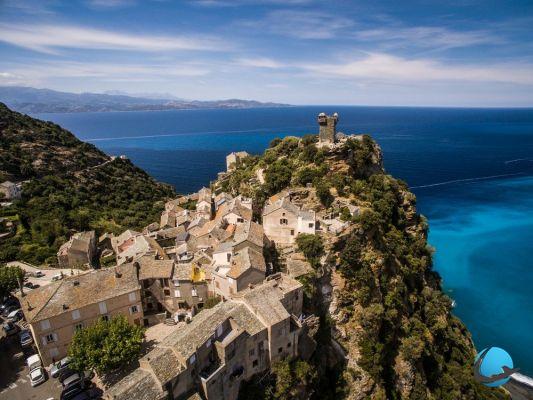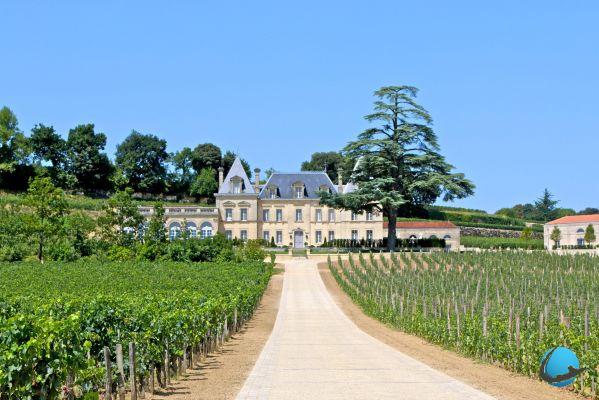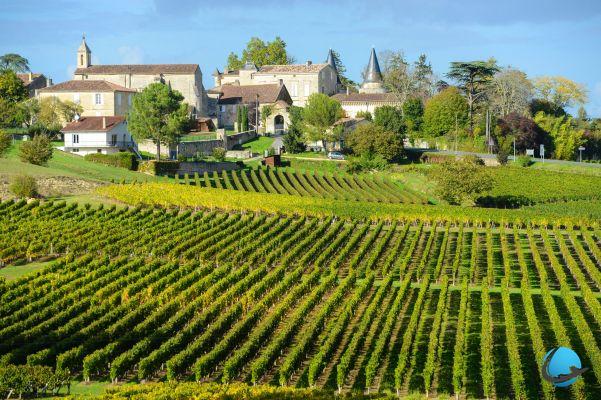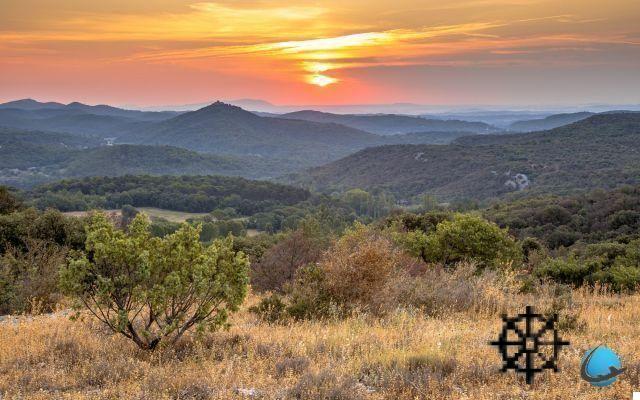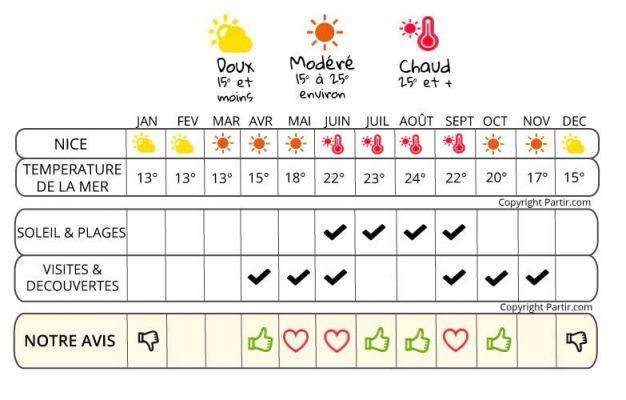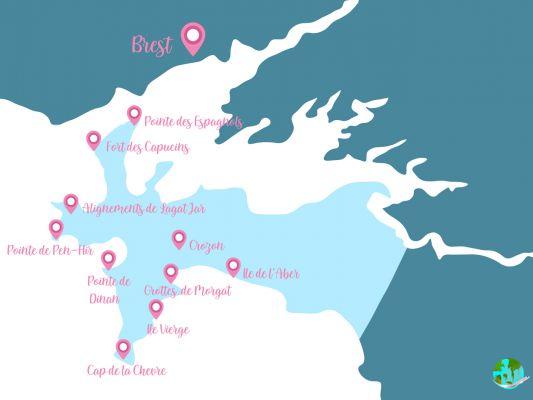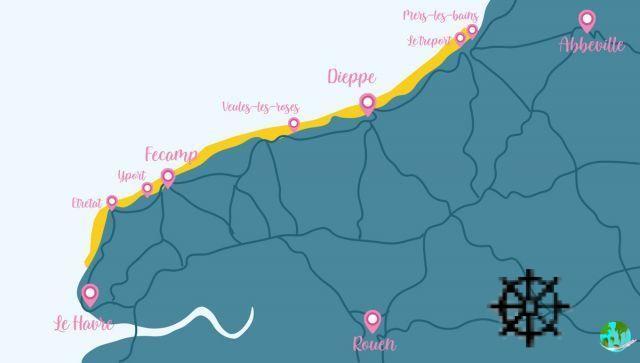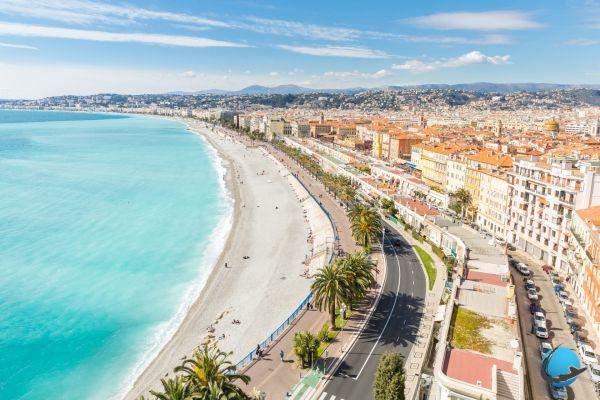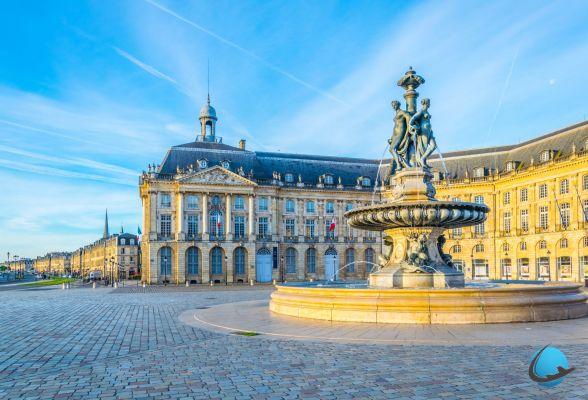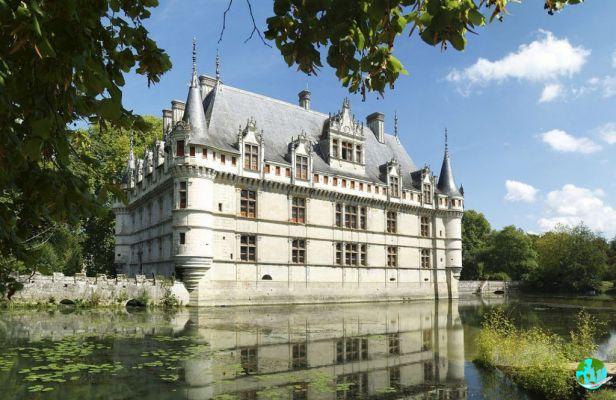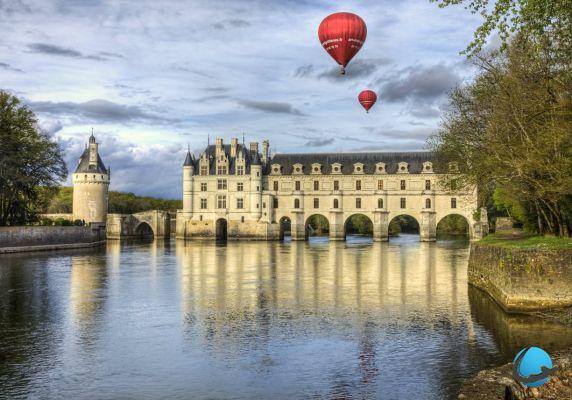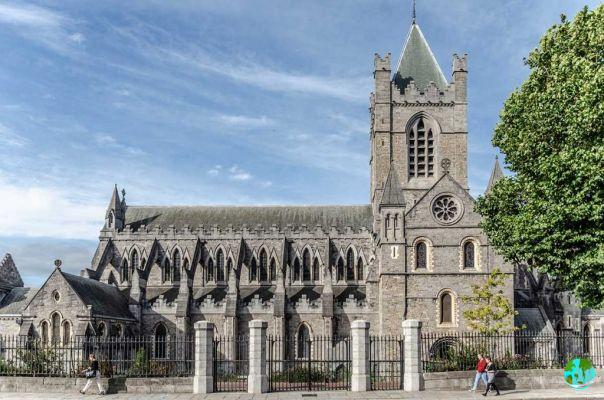Today, we are heading towards Normandy, one of the most visited regions in France. Indeed, Normandy conceals natural, architectural and historical treasures. In this article, we are going to ask ourselves what to do in Normandy? What are the must-see places to visit in this beautiful region?
We know Normandy from its cliffs, especially those of Etretat, its posh towns like Deauville, Honfleur or Cabourg or even from one of the most visited monuments in France: Mont-Saint-Michel, but we will see that Normandy hides many other things to see and do.
Contents: What to do in Normandy?
- Le tréport
- Dieppe
- Veules-les-Roses
- Fécamp
- Etretat and its cliffs
- Le Havre
- Honfleur
- Deauville & Trouville
- Cabourg
- The landing beaches
- Bayeux
- Cherbourg and the Cotentin
- Mont-Saint-Michel and its bay
- Caen
- Rouen
Practical advice for organizing your stay in Normandy
Before presenting the things to see and do in Normandy, let me give you some practical advice.
- How to come to Normandy?
Normandy is easily accessible, whether by car, by train, via Rouen and Le Havre stations, and even by plane thanks to Caen-Carpiquet airport. Some bus companies also offer trips from different cities in France to Normandy at very attractive prices.
- When to visit Normandy?
Normandy is a popular region in the summer. It is at this time that the climate is the most pleasant: less precipitation and more pleasant temperatures.
At the beginning of September, you can also attend the famous American film festival in Deauville, very famous.
- Where to sleep in Normandy?
Normandy has beautiful hotels and perfect places to stay for one or more nights. Throughout this article, you will find selections of accommodation: more upscale hotels and even some campsites. Indeed, Normandy has many beaches, offering the possibility for campsites to have direct access to the beaches and giving rise to quite charming places to sleep.
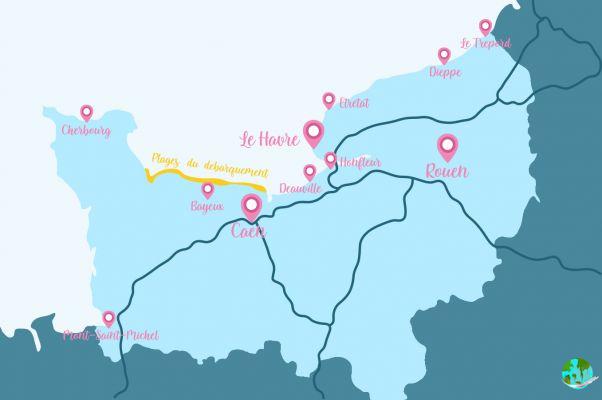
What to do in Normandy?
Le tréport
Let's start this article on what to do in Normandy, with the extreme east of the Normandy coast. Here is the small port of Tréport, on the border between Normandy and Picardy. Le Tréport faces another charming village, Mers-les-Bains, on the Picardy side.
These two port villages are worth the detour. On the Mers-les-Bains side, the beginning of the Alabaster coast, there are many very colorful bourgeois houses facing the sea. A very pleasant walk between beautiful houses and a beautiful beach, surrounded by typical cliffs several meters high. height, is a must. You can take a few steps to take a little height and admire a breathtaking view from the top of the cliffs.
Concerning Le Tréport, seaside resort and important fishing port, you can take a cable car leading you to the top of the cliffs of the city. Stroll through the streets of Le Tréport, discover the famous Cordiers district or even go along the beach, to the lighthouse at the end.
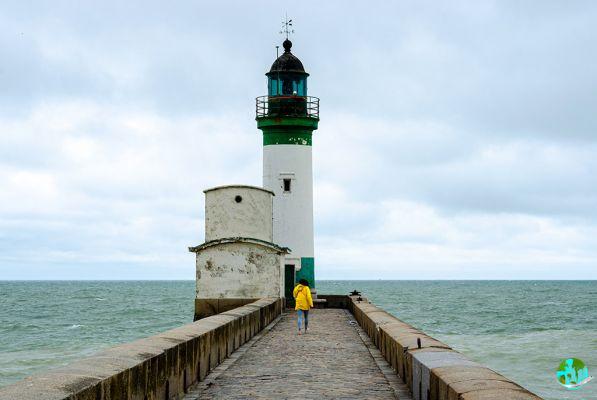
Dieppe
Dieppe is a famous city for several reasons. First of all, it is the first port for the famous Saint-Jacques shell. Gourmets will be delighted! Dieppe was also the first seaside resort in France during the XNUMXth century.
The different neighborhoods of this city will take you through various eras and atmospheres. Whether on the seafront, where there is a World War II memorial; or by taking a little height on the city, with the historical museum of Dieppe and the view on the city; or the district along the marina where there are magnificent buildings and the Fish Market; or to finish the Pollet district, with a strongly marked historical imprint. From the Pollet district, you can access the Dieppe cliff.
Unusual accommodation to do in Normandy
Normandy is an ideal region for a road trip: beaches as far as the eye can see, vertiginous cliffs, lush countryside. During our visit, we wanted to test some unusual accommodation: cabins, tents, caravans, etc. We wanted to get out of the usual hotels and out of our comfort zone.
Here is a short selection of unusual accommodation in Normandy that we recommend!
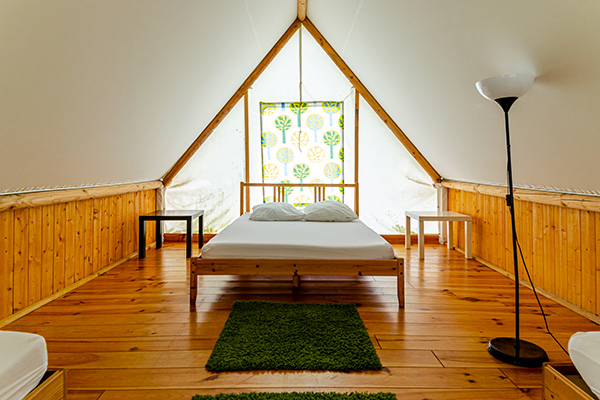
Etretat Adventures
Here is a place that will charm young and old alike! A few minutes from the cliffs of Étretat, this park offers a tree climbing course, as well as unusual accommodation in their wooded park: tents, domes, tree houses! In short, the choice is yours. This is the ideal place for a night of total change of scenery! Welcome, Location, Unusual See the rates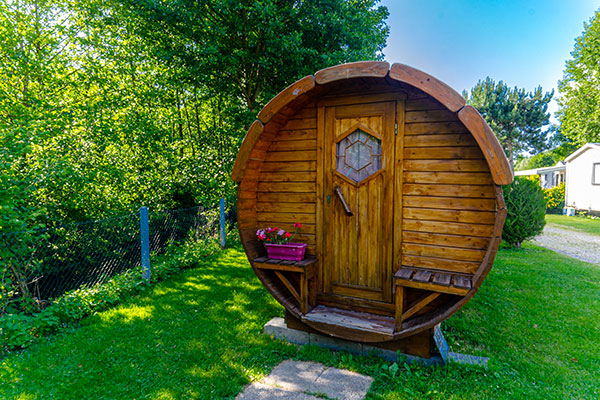
Domaine de la Catinière
This second accommodation is located in a campsite. We tested one night in a barrel! And honestly, we love this type of unusual accommodation. It was cocooning, comfortable and cozy. Perfect for your stopover in Honfleur. This campsite also offers many activities and is located a few kilometers from Honfleur. Unusual, Activities, Reception See prices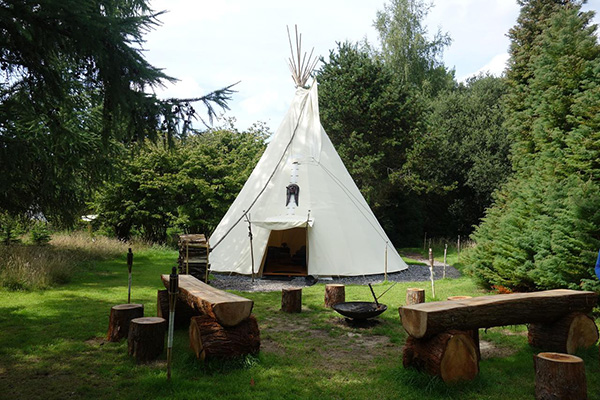
Levaltipis
Let's finish this suggestion of unusual accommodation in Normandy with these completely original teepees! Distributed in a huge park, the tepees invite you to get away from it all and disconnect. You can also take advantage of the wood stove to warm up inside. A truly exceptional place, quiet and surrounded by nature! Setting, Comfort, Hospitality See prices
Veules-les-Roses
Let's continue our discovery of the Normandy coast with a stop at Veules-les-Roses. The Veules is the smallest river in France with its kilometer long.
Discover Veules-les-Roses by following the Veules which meanders before flowing into the nearby sea. Its course gives birth to charming alleys, between mill, watering place, place of reproduction of brown trout or typical houses. A tourist route has been set up to discover all the secrets of this place.
Once the village has been visited, you can go to the beach, where the Veules joins the sea. Perfectly laid out, the seaside is a very pleasant place whether for walking, taking a break on the terrace or keeping the children busy. in suitable play areas.
If you want to discover Veules-les-Roses at its best, plan a visit when the roses are in bloom! Many rosebushes dress the whole city, making the spectacle sumptuous when they are all in bloom.
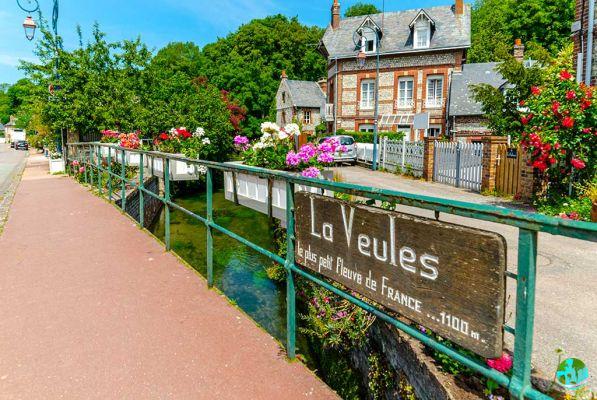
Fécamp
Before heading to one of the most popular places on this coast, let's make a stop in Fécamp. A small port town, between sea and cliffs. You can also take advantage of its large beach with a view of the cliffs, its dynamic port and its 2 lighthouses which act as entry or exit doors, or even visit the various tourist sites of the city.
The port is a popular spot for fishermen who come along the pier leading to the lighthouses.
As for the visit of the city, we discovered a charming city center where guided tours are offered. In addition, it is part of the national network of Cities and Countries of Art and History. From the Saint-Etienne church to the Sainte-Trinité abbey, passing by the Fisheries Museum or the Benedictine Palace, Fécamp is a city to discover.
To finish our discovery of Fécamp, we wanted to take a little height. To do this, head for Cap Fagnet. You can admire the view of Fécamp, its port, its beach and the cliffs in the distance. There is also a chapel there which is dedicated to sailors who lost their lives at sea.
Etretat and its cliffs
Probably the most popular tourist site in this region with Mont-Saint-Michel, Etretat and its cliffs are a must for a stay in Normandy.
The sea has shaped incredible sculptures in the cliffs: the cliff of Amont on one side, and the cliff of Aval just opposite. You can go above each of them.
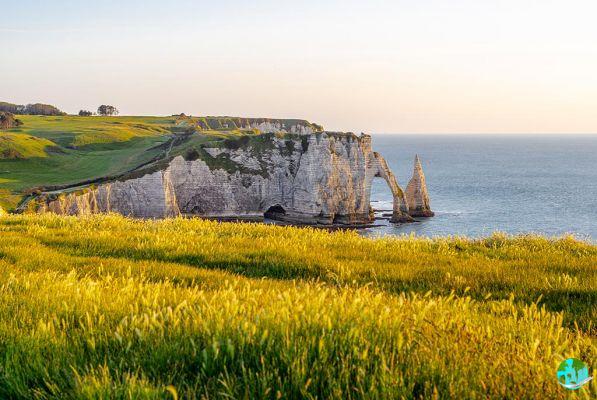
On one side is the golf course, on the other, the small Notre-Dame-de-la-Garde chapel, a coastal path with a breathtaking view and an original place: the Gardens of Etretat. These gardens are an elegant mix between a neat and elaborate landscaping, and various works of art perfectly integrated into this universe. A visit that will appeal to young and old alike!
The tides in NormandyTidal phenomena punctuate local life. Some sites are only accessible at low tide, other excursions will only be possible at high tide. In short, depending on what you want to do, keep up to date with the tides. Specific applications exist to follow the evolution of the tides such as tide.info for iOs.
Le Havre
A city listed as a UNESCO World Heritage Site since 2005, Le Havre is a city with a heavy past. Almost entirely destroyed during the Second World War, it was rebuilt by the architect Auguste Perret, a specialist in reinforced concrete. Faithful to the specialization, the architect built a city entirely made of reinforced concrete, giving an undeniable uniqueness and a particular and recognizable style. The city has evolved over time while keeping its originality.
During your visit to Le Havre, you can observe a “monumental triangle”. Consisting of several remarkable buildings, the latter offers a pleasant walk between the buildings imagined and designed by A. Perret.
Among the most amazing buildings in the city is St. Joseph's Church. Recognizable from afar, with its 100 meters high, it is not an ordinary equalizer. It is strongly advised to go inside to realize the grandeur. You can also admire the many stained glass windows covering the central tower.
In the middle of these reinforced concrete buildings, more recent constructions have taken place, such as the Volcano for example, which is a large hall hosting concerts, shows, etc.
I also advise you to visit the Perret show apartment. This gives an idea of what the architect wanted for the reconstruction of housing in the city.
There are many other neighborhoods to visit in the city.
Honfleur
The small town of Honfleur has something to charm its visitors. From the port to the cobbled streets, it is a dynamic and lively city. Pleasant to live in, it also conceals historical sites to visit. Among the best known are the Salt Greniers, the Old Honfleur Museum and the Eugène-Boudin Museum.
We particularly enjoyed our evening on the outskirts of the Vieux-Bassin (the small port located in the city center) where the many facades are reflected in the water and where the terraces bring the city to life.
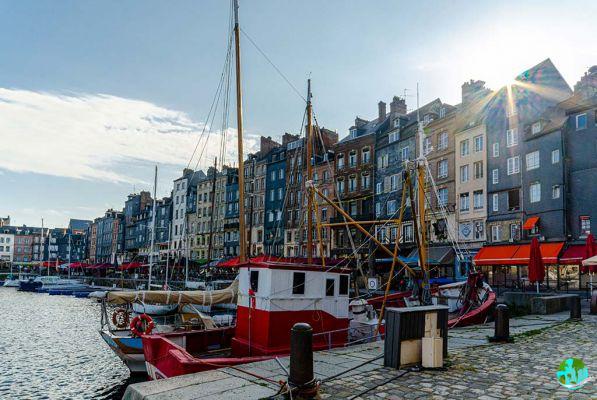
Finally, a museum that is off the beaten track is also worth visiting before leaving the city: the Naturospace. Large tropical greenhouse sheltering all kinds of butterflies and exotic birds, it will interest young and old alike.
Deauville & Trouville
Here are now two cities situated one opposite the other.
Let's start with Trouville, a small port town where it is good to walk around to discover the shopping streets of the old town centre. Among the sites to see in Trouville, you will notice the Casino, the fish market or the Villa-Montebello, now transformed into a museum. This 1865 villa is remarkable for its architecture and its location, overlooking the sea.
Along the beach, you can admire the beautiful villas, surrounded by their gardens and all having direct access to the beach.
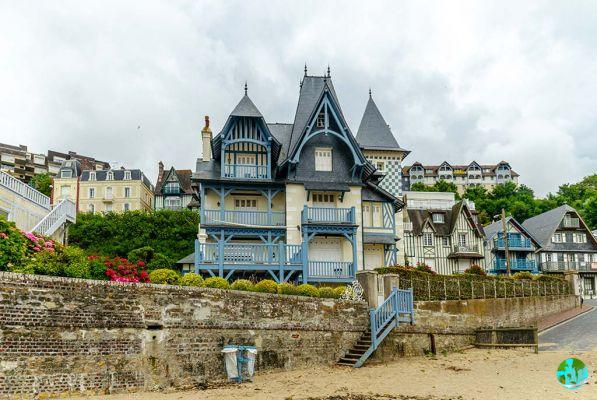
As for Deauville, on the opposite shore, it's a very different atmosphere. For this, go to the edge of the beach, where the cabins each bear the name of an illustrious American actor.
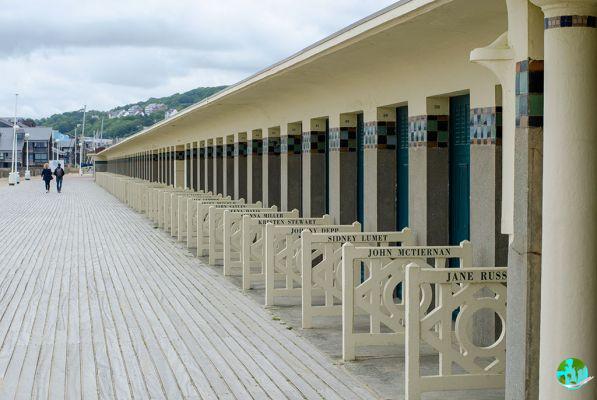
In summer, the beach is adorned with colorful and perfectly aligned parasols. Not far from there, many luxury boutiques, high-end hotels, a casino, a racecourse and villas with eye-catching architectural styles. Among the most famous, I advise you to pass in front of the Strassburger villa, built by Henri de Rothschild in 1907.
For more information, I invite you to take a look at our article dedicated to visiting Deauville and Trouville.
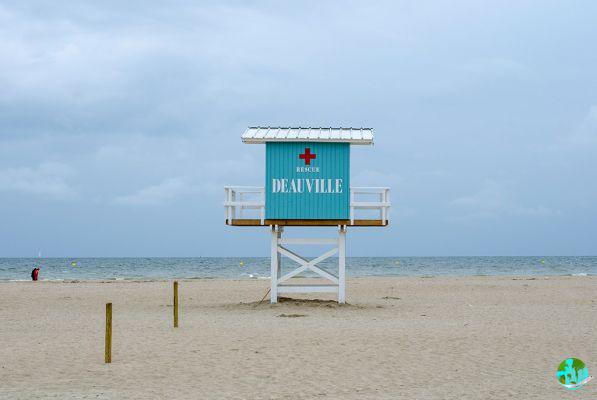
Normandy and its different coasts attract many tourists each year. The hotel offer has therefore adapted to this influx and some of the most beautiful hotels in France have emerged. Here are some of the most emblematic if you want to treat yourself to a dream night during your stay in Normandy!

The Normandy
Large luxury hotel located close to the planks of Deauville. This establishment is renowned for its standing, its location and the hospitality of the staff. Many facilities are at your disposal such as a gym or an indoor swimming pool. If you want to know more about this hotel, go to our article “Where to sleep in Deauville?”. Standing, Location, Reception See prices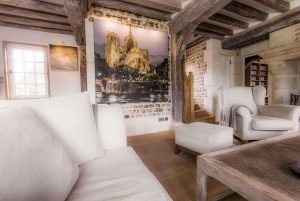
The Domain of Ablon
A few steps from Honfleur, this magnificent haven of tranquility in the middle of nature welcomes you for a stay in Normandy. Refinement, authenticity and elegance perfectly describe this establishment. The owners have the attention to detail to make your stay as pleasant as possible: from the room to the breakfast! Decoration, Calm, Welcome See the rates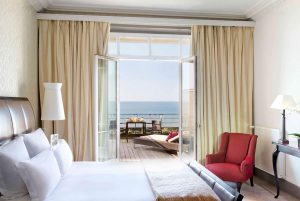
Le Grand Hotel Cabourg
Directly overlooking the beach, this very beautiful high standard hotel promises you an exceptional stay. A splendid setting, extremely friendly staff and very comfortable rooms. This is what awaits you in this establishment. If you can, opt for a room with a sea view! Setting, Comfort, Hospitality See prices
Cabourg
Welcome to the city of Marcel Proust! This small seaside resort is concentrated around the Casino and the Grand Hôtel, along the Marcel-Proust promenade, in homage to the famous writer. You can also admire sumptuous villas overlooking the beach.
If you appreciate these beautiful Belle Époque style villas, then move away from the city center and get lost in the surrounding streets. You can find some nice surprises there!
The landing beaches
After touring the seaside resorts along the Normandy coast, here we are along the landing beaches, with all the history they can evoke.
Along the entire coast of Nacre (from Ouistreham to Omaha Beach), a multitude of memorials, museums, vestiges and visits are to be made for history enthusiasts. This part of Normandy was the site of some of the most historic bloody battles.
I suggest you divide this part according to the different beaches on which the allies landed: Sword Beach, Juno Beach, Gold Beach, Omaha Beach and Utah Beach.
In addition to the museums presented below, you will find many other small museums on the whole of this coast.
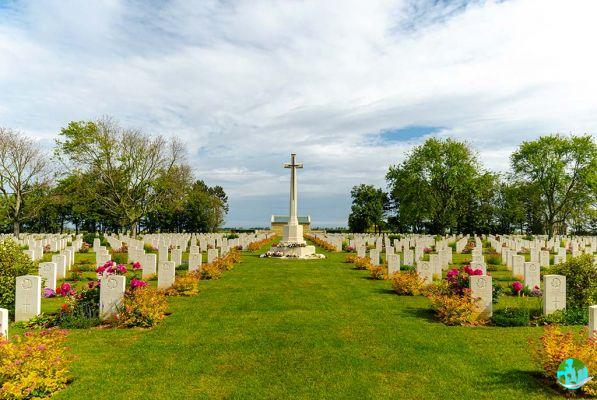
Sword Beach
From Ouistreham to Saint-Aubin-sur-Mer, Sword Beach is the only beach where the French landed during the Allied landings.
If you are passing through Ouistreham, you will discover a small seaside resort very popular with the Caennais. The Atlantic Wall Museum is very interesting to visit. Without forgetting the beach and its huts, the promenade along the beach or the marina.
Continuing, you can take a short break in Lion-sur-Mer. It is here that you can see a whale skeleton measuring approximately 19 meters. The latter ran aground in 1885 and can be seen ever since in the gardens of the town hall. In addition, some beautiful old buildings can be observed.
Juno Beach
We then arrive on Juno Beach. The Juno Beach Center is located in Courseulles-sur-Mer. It is a memorial to the landing of the Canadians on these same beaches on June 6, 1944. Two bunkers are to be visited only if you opt for the guided tour. All you have to do is call a few hours or days before to reserve the time slot you want. You will find all the necessary information on the museum's website directly.
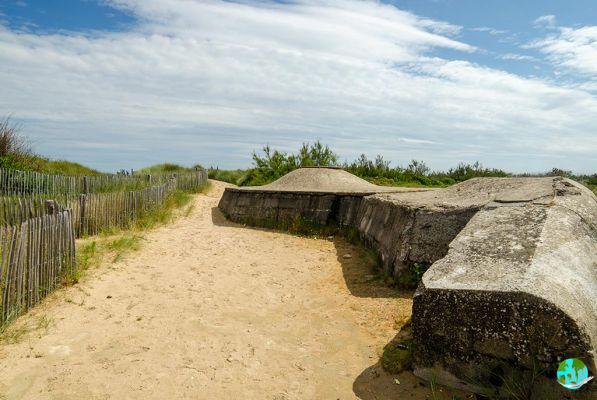
Not far from the museum, on the road towards Bény-sur-Mer, you can go to the Canadian cemetery. Like any military cemetery, the alignment of hundreds of graves is quite impressive and moving.
Gold Beach
The next beach, Gold Beach, saw the British landing. A remarkable place is to be seen here. It is located in Arromanches-les-Bains, it is the remains of the artificial port. Visible from afar, these vestiges arouse the curiosity of passers-by! Large half-submerged boulders are visible off Arromanches, as well as floats on the beaches. This allows us to have an idea of the extent of the artificial harbor built by the allies. A landing museum is worth visiting, as well as a viewpoint over the bay a little outside the city, where there is also a 360° cinema on the landing.
Omaha Beach
Perhaps the best-known historic beach, Omaha Beach is where the Americans first landed. There is of course an American cemetery to see. This one is large, well maintained and gives an idea of the extent of the losses within the American ranks during this war. Located on the heights of Omaha Beach, you can enjoy the view from the cemetery over the bay and the beach. The memorial in this cemetery is impressive, with the garden of the Disappeared and its large frieze where many names are inscribed.
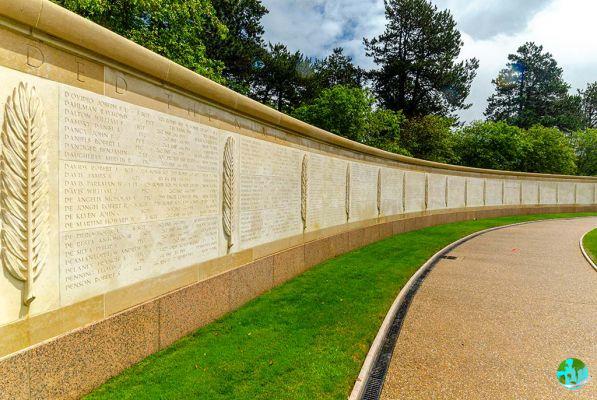
Then, plan a visit to the Omaha Beach Memorial: a museum retracing the landing of the Americans, many objects, weapons, uniforms, etc. are exhibited and explained. I recommend the little half-hour film, made with period images and interviews. Very informative. Leaving the museum, go to the beach right next to it.
Other historical sites are to be seen such as the battery of Maisy or the Pointe du Hoc.
Utah Beach
Utah Beach is the most westerly of all the beaches, at the start of the Cotentin. It was the Americans who landed here. In memory of the historical events that took place on this beach, I advise you to visit the Utah Beach Landing Museum. This museum took place in a former German bunker. Very well laid out and as easily accessible for adults as for children, this museum retraces the D-Day landings in a fun way. A large canopy offers a view of Utah Beach and for the most curious, a flight simulator awaits you!
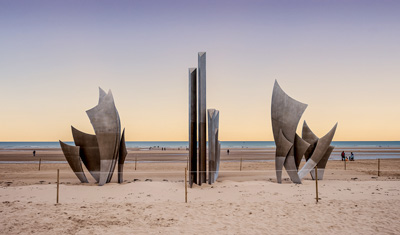 To read: Visit the landing beaches
To read: Visit the landing beachesIf you want to know more about this subject, about museums, cemeteries and places to visit in the region, see our complete article on visiting the landing beaches. Visit the landing beaches
Bayeux
Now that the Normandy coast holds no more secrets for you, I invite you to go slightly inland to take the direction of Bayeux. Known for its tapestry and its cathedral, Bayeux is a city that did not suffer from bombardments during the Second World War, which allowed it to keep its historic architecture intact.
Start your visit to Bayeux with a tour of the Old Town and admire the old houses in the small alleys. Following the signs, take the direction of the famous tapestry. You will be taken to pass through some beautiful places in the city. An audio guide is provided at the museum entrance to follow the history of the frieze as you visit. A very interesting discovery of this tapestry 70 meters long.
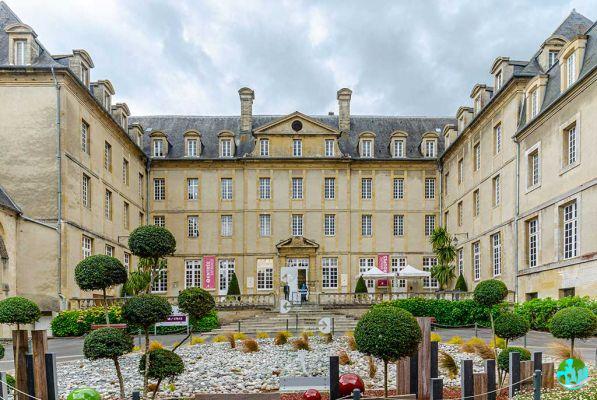
On leaving, head towards the cathedral, one of the most beautiful in the region. Inside, I invite you to descend into the vaulted crypt of the latter.
Not far from the cathedral, you can also visit the Baron-Gérard de Bayeux Museum of Art and History, presenting the history of the city.
And to end your discovery of Bayeux in style, I recommend the Memorial to the Battle of Normandy. Between explanatory rooms and exhibitions of war objects and vehicles, this museum is very interesting.
Cherbourg and the Cotentin
The Cotentin is this small peninsula to the west of Normandy, where Cherbourg took place at the very end! We have already talked about a small part of the Cotentin when I presented Utah Beach to you a little earlier.
But the Cotentin is much more than that!
What to do in Normandy: visit Cherbourg
Cherbourg is the most populated city in the Channel, it is also the economic capital of the Cotentin and to top it off, it is the city which has the second largest artificial harbor in the world. As you will have understood, Cherbourg is an important city, mainly facing the sea and which has been the object of many desires throughout history due to its geographical location, strategically well placed.
Today, Cherbourg has 4 ports: pleasure, military, trade and fishing. But also many museums and sites to visit. Among the main ones, there is the Museum of Fine Arts Thomas Henry, the factory of the famous umbrellas of Cherbourg, a museum of Natural History and Ethnography presenting rich and very varied exhibitions or the Cité de la Mer. This The latter took place in the old maritime station of Cherbourg, renowned for its art deco style. Today, this museum presents the underwater world through exhibitions or large aquariums, and it even invites you to visit the largest visitable submarine in the world: the Redoutable. A rich, interesting and fun museum that will please the whole family.
The Cotentin
This peninsula has a multitude of sites to visit and see. Beautiful walks along the coast are also possible, for example in the Val de Saire where several kilometers of hiking await you. It's up to you to choose the difficulty and the duration of your hiking excursion.
Not far from there, the village of Barfleur is very famous or the island of Tatihou sheltering a maritime museum.
In the extreme north-west of Cotentin, you can go to Pointe de la Hague. Discover the highest cliffs in Europe, charming little villages with typical houses or the very beautiful cove of Vauville.
Going down on the west coast towards Mont-Saint-Michel, there are very beautiful fine sandy beaches and views of the Channel Islands, as is the case at Cap de Carteret.
I'll tell you about Mont-Saint-Michel a little later in this same article!
Mont-Saint-Michel and its bay
Mont-Saint-Michel is one of the most visited tourist sites in France. And for that, we had booked different activities: visit to the Abbey, hiking in the bay or even flying over in a microlight. Unfortunately, the other museums in the compound were closed due to the current epidemic. We were still able to walk inside Mont-Saint-Michel, to admire the small cobbled streets, the hidden stairs, the magnificent views of the bay and the typical houses!
Visit the Abbey
But the main interest of a visit to Mont-Saint-Michel is to get to the heart of the latter, where all the history of several hundred years is locked up and where the most mysterious secrets are to be discovered: the abbey of Mont-Saint-Michel.
Visible for miles, the Abbey is worth a detour. You must reserve a day and a time of visit before. I strongly advise you to opt for an audio guide. You will learn more about this place and its history.
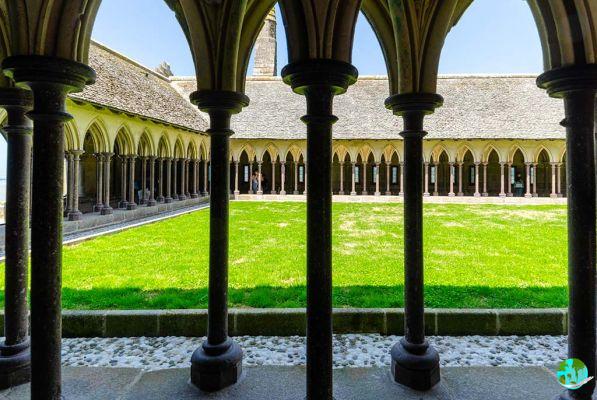
The abbey of Mont-Saint-Michel is divided into several buildings, each with a specific history and function. The markers of each historical period are found in the different architectural styles.
Hike in the bay
One of the most memorable experiences of our visit to Mont-Saint-Michel was our hike in the bay. We had booked a 3-hour ride to explore this beautiful bay. Accompanied by a local guide, who knew his subject perfectly well, we learned a multitude of things about the history of Mont-Saint-Michel, its bay, the daily tides and the local fauna.
During this excursion, our guide also told us about the famous quicksand, which is often the subject of dramatic stories. Contrary to popular belief, quicksand is not as dangerous.
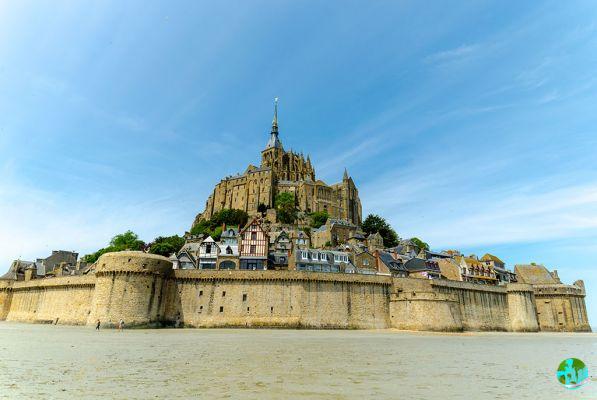
This hike is really a must in my eyes: both fun and instructive, it also allows you to get away from the crowds swarming in the narrow streets of the Mont.
Bring a hat and sunscreen, and it's barefoot that you'll get the most out of this experience!
Microlight flight over Mont-Saint-Michel
To complete our visit to this magnificent place, what better than to take a little height? It was aboard an auto-gear that I had the chance to fly over the salt marshes, the bay and the magnificent Mont-Saint-Michel! This view from the air is truly breathtaking.
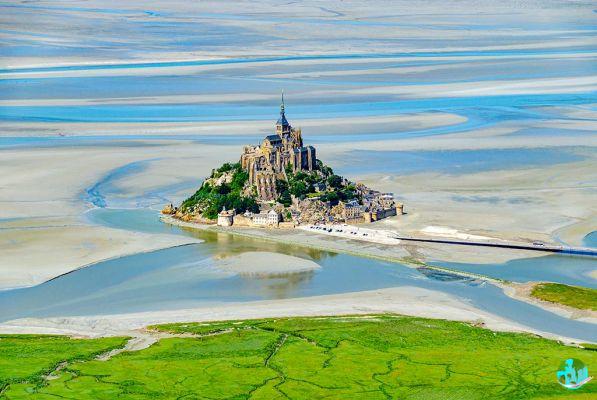
As for the ULM, it's a rather nice feeling! You have to cover up because at altitude, the temperature is lower than on dry land. Equipped with a helmet and a microphone, the pilot gives me a lot of information about the place. The ULM can only take one person at a time, but it's definitely worth it. Personally, I took off from Avranches aerodrome. With a 25 minute flyover, we had plenty of time to get to Mont-Saint-Michel.
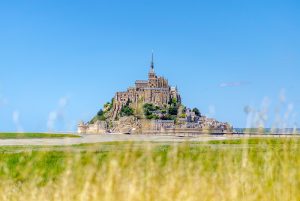 Article: Mont-Saint-Michel
Article: Mont-Saint-MichelMont-Saint-Michel is a rich place that deserves an article on its own! And it's done. Find our dedicated article on our visit to Mont-Saint-Michel with all our recommendations and visit advice: reservations, activities, timetables, prices, etc. Article: Visiting Mont-St-Michel
Caen
Let us now focus on the capital of Lower Normandy, namely, the city of Caen. Visiting Caen means discovering the Old Town, visiting its castle and its museums located inside (Normandy Museum and Museum of Fine Arts), going to the Caen Memorial, enriching your naturalist knowledge in the Jardin des Plantes or visit the Abbaye-aux-Dames and the Abbaye-aux-Hommes. For the little anecdote, these two buildings were each built respectively by Mathilde of Flanders and William the Conqueror. They were accused of having married when they were “too close” cousins for the pope. This crime of consanguinity earned them the construction of these two Abbeys to reconcile with the Pope and the Church.
Caen is a dynamic city to be lived in for a weekend in order to discover its small neighborhoods and its good addresses.
Rouen
To conclude this article on what to do in Normandy, I will introduce you to one of the important cities of Normandy: Rouen. Nicknamed the "city of a hundred steeples", Rouen has an important history over the centuries. And among the most famous historical facts, it was in Rouen that Joan of Arc was burned. This is why you will be able to find many sites and places in his memory. Later, renowned artists such as Flaubert or Monet also visited Rouen. And it was during the Second World War that Rouen experienced tragic moments: bombings, fires,...
Throughout your visit to Rouen, you will be able to find testimonies of this rich, but sometimes cruel past. Don't miss the Notre-Dame de Rouen cathedral, or the antiques district. Not far from the cathedral, I advise you to visit one of the city's emblems: Gros-Horloge. It is a belfry on an arch below which passes a shopping street in Rouen. After being restored, you can now visit the interior.
The Museum of Fine Arts is also famous or the Historial Jeanne-d'Arc.
My opinion on Normandy
After spending a few days visiting Normandy, I found this region of France very interesting. There are many things to do and see in Normandy. The advantage of this region is that it also mixes cultural visits with many museums; that the historical visits with the events having taken place and leaving certain testimonies; without forgetting the seaside side which is very present and attracts a good number of holidaymakers.
On the other hand, I can't hide the fact that the weather isn't always good… It's quite changeable, sometimes rainy and windy, and the temperatures are cooler. Apart from this detail, it is a region that I really appreciate, especially for the historical side, with the vestiges of the Second World War and all the museums presenting this complex subject!




